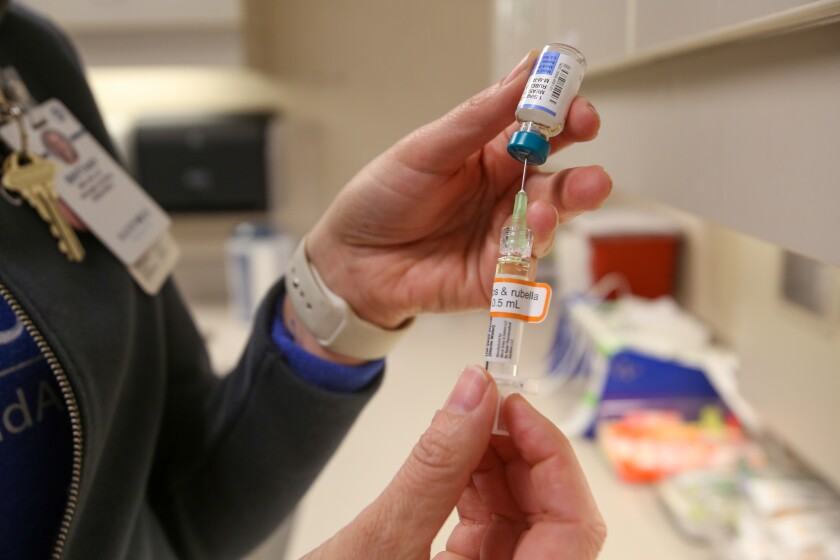FARGO — Adults should check their vaccination records, as ones born before 1989 may have only received one dose of the measles vaccine, a doctor said.
Others may have a vaccine that doesn’t provide protection against the highly contagious virus, experts said.
ADVERTISEMENT
Measles has reached largely impacting unvaccinated children. Of the 13 cases, the state has reported infections in three adults over the age of 20 years old, according to the state Department of Health and Human Services.
The Centers for Disease Control and Prevention recommends two doses of the measles, mumps and rubella (MMR) vaccination: the first when children are 12 to 15 months old, then the second between the ages of 4 and 6 years old.
Some adults born before 1989 may only have one dose, said Dr. Alison Galdys, a University of Minnesota professor in the Infectious Diseases and International Medicine Division. That’s because the CDC only recommended one dose before an outbreak that year.
“I think this is a time for people to know their own vaccine status,” she said.
One dose of the MMR vaccine provides 93% protection, said Dr. Avish Nagpal, an infectious disease specialist at Sanford Health in Fargo. A second shot boosts that effectiveness to 97%, he said.
“Even with one dose, many people are very well-protected from the disease,” he said.
The current vaccine lasts for life, and doctors typically don’t recommend a second dose for adults who have one shot, Nagpal said.
ADVERTISEMENT
That could change he said.
“That recommendation hasn’t come yet,” he said. “Depending on how many cases we get in North Dakota, we may get that recommendation for a booster for that age group before 1989.”
People born before 1957 are considered immune, since they were exposed to the disease, Nagpal said. Measles vaccines became widely available in 1963, the CDC said.
Some were less effective than others, Galdys and Nagpal said. Researchers developed a killed, or inactivated, vaccine. It introduces a killed version of measles into the body, which the immune system recognizes without causing the disease, Galdys said.
Doctors studied kill vaccine recipients and found the antibodies that fought the measles dropped, eventually making it ineffective, Galdys said.
“The kill vaccine wasn’t found to be very good,” Nagpal said.
A live vaccine was developed in 1967 and replaced the killed vaccine, Galdys said. Those who got the kill vaccine may no longer have protection from measles, Nagpal said.
ADVERTISEMENT
Some may not know what type of vaccine they got, since records may no longer exist, he said.
“So for those people, specifically for that cohort between 1957 and 1967, we say that if you don’t know what vaccine you got, you should get the vaccine that we have right now,” he said.
Galdys agreed, noting that the live product is very effective.
Patients who don’t have records can get a blood test to determine their immunity, Nagpal and Galdys said. That can cost more than $100.
The blood test isn’t perfect, Galdys said. It shows exposure to measles, but it may not show how much protection a person has, she said.
The vaccine is typically covered by insurance, and the federal vaccines for adults and children programs can help cover most of the cost for those who are uninsured, Health and Human Services said.
“Many people opt to get the vaccine rather than adding another step and getting a blood draw,” Nagpal said.
ADVERTISEMENT
Residents in North Dakota and Minnesota can check their vaccination records by using the Docket app, which can be found at
North Dakota vaccination locations can be found at Minnesota’s vaccine map is at












